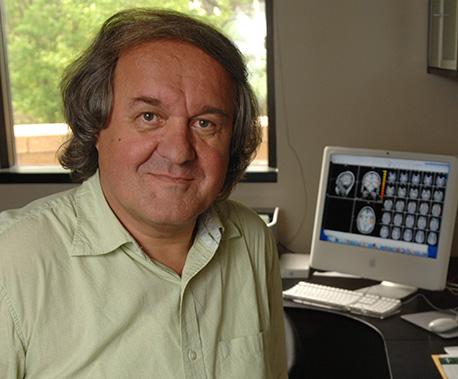NEUROSCIENTISTS UNCOVER BRAIN ABNORMALITIES RESPONSIBLE FOR TINNITUS AND CHRONIC PAIN
SEPTEMBER 23, 2015—Neuroscientists at Georgetown University Medical Center and Germany’s Technische Universität München have uncovered the brain malady responsible for tinnitus and for chronic pain — the uncomfortable, sometimes agonizing sensations that persist long after an initial injury.
In the October issue of Trends in Cognitive Sciences, researchers say identifying the problem is the first step to developing effective therapies for these disorders, which afflict millions of people. None now exist.
The scientists describe how the neural mechanisms that normally “gate” or control noise and pain signals can become dysfunctional, leading to a chronic perception of these sensations. They traced the flow of these signals through the brain and showed where “circuit breakers” should be working — but aren’t.

In both disorders, the brain has been reorganized in response to an injury in its sensory apparatus, says Josef Rauschecker, PhD, DSc, director of the Laboratory for Integrative Neuroscience and Cognition at GUMC. Tinnitus can occur after the ears are damaged by loud noise, but even after the brain reorganizes itself, it continues to “hear” a constant hum or drum. Chronic pain can occur from an injury that often is healed on the outside but persists inside the brain.
“Some people call these phantom sensations, but they are real, produced by a brain that continues to ‘feel’ the initial injury because it cannot down-regulate the sensations enough,” he says. “Both conditions are extraordinarily common, yet no treatment gets to the root of these disorders.”
Areas of the brain responsible for these errant sensations are the nucleus accumbens, the reward and learning center, and several areas that serve “executive” or administrative roles —the ventromedial prefrontal cortex (VNPFC) and the anterior cingulate cortex.
All of these areas are also important for evaluating and modulating emotional experiences, Rauschecker says. “These areas act as a central gatekeeping system for perceptual sensations, which evaluate the affective meaning of sensory stimuli — whether produced externally or internally — and modulates information flow in the brain. Tinnitus and chronic pain occur when this system is compromised.”
Other issues often arise in “lockstep” with tinnitus and/or chronic pain, such as depression and anxiety, which are also modulated by the nucleus accumbens, he says. Uncontrollable or long-term stress is another important factor.
Ironically, the brain plasticity that produces some of these changes provides hope that this gatekeeping role can be restored, Rauschecker says. Because these systems rely on transmission of dopamine and serotonin between neurons, drugs that modulate dopamine may help restore sensory gating, he says.
“Better understanding could also lead to standardized assessment of individuals’ risk to develop chronic tinnitus and chronic pain, which in turn might allow for earlier and more targeted treatment,” adds Markus Ploner, MD, PhD, a consultant neurologist and Heisenberg Professor of Human Pain Research at the Technische Universität München (TUM).
Rauschecker, an expert in tinnitus, collaborated with Ploner, who studies chronic pain, during his senior fellowship at the Institute of Advanced Study at TUM. Co-authors include Audrey Maudoux, MD, PhD, from GUMC and Elisabeth May, PhD, from TUM.
The National Institutes of Health (RC1-DC010720), the American Tinnitus Association, the Skirball Foundation, the Tinnitus Research Initiative and the Tinnitus Research Consortium have supported tinnitus research in the Rauschecker lab.
Media Contact: Karen Teber – GUMC Communications
